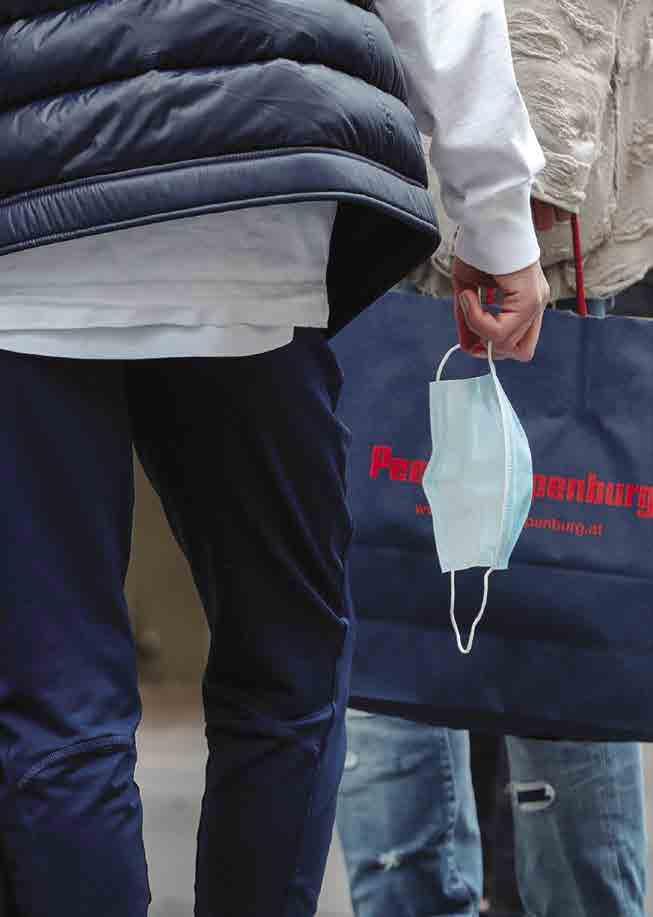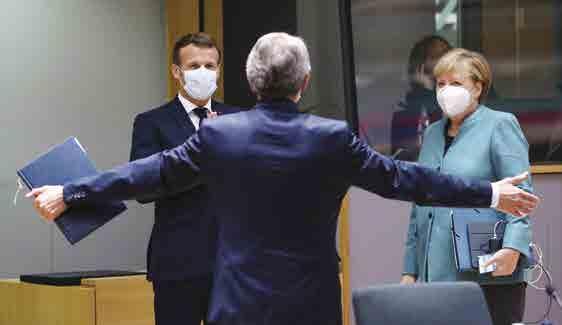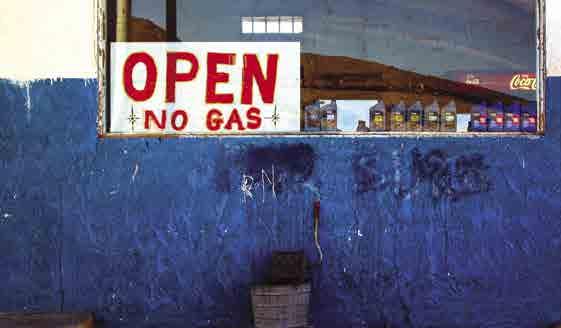
9 minute read
The Resilience of Supply Chains
The Resilience of Supply Chains
The 20 years since the historic decision of the Seattle conference to admit China as a WTO member offer us an opportunity to reflect on two perspectives on globalisation analysis; one based on contingency and the other based on defined geopolitical assets. Albeit with a thousand contradictions.
Advertisement
BY DARIO DI VICO — JOURNALIST, CORRIERE DELLA SERA
When we first began to recognise the impending scale of the coronavirus pandemic in 2019, a view immediately formed that can best be summarised as “less mobility equals less globalisation”. Slowly but surely, however, economic reports that were coming in began to provide additional context that did not reinforce that initial verdict. The so-called global value chains that we had judged to be at risk ended up demonstrating levels of resistance that were clearly superior to the initial forecasts. Undoubtedly demonstrating that this relatively new area was constructed on a system of optimised commercial exchanges, it also built a cross-border hinterland of shared values of industrial culture. In the critical moments, this provides a cushion to soften the blow.
This reflection is of particular relevance to the Italian manufacturing system, which primarily acts as a supplier (see the relationships and the operating methods of the French luxury goods and German automotive industries), as well as a primary contractor in this chain. For months, the industrialists from northern Italy were hesitant to look beyond these chains, while there was not a single case reported in which Italian enterprises were replaced by companies from other countries, proving that suppliers were being chosen on the grounds of medium-term considerations, which fortunately include the quality of the manufacturing and of the human capital. If we can place this extraordinary capacity of value chains to overcome interruptions to mobility of people and goods in the plus column, then this is also the time to ask ourselves about the more general endurance of this globalisation. There is one simple question: is the chain broken? According to Alessandra Lanza, senior partner at Prometeia and a leading scholar of global trade flows, this simple question has no equivalent simple answer. The pandemic accelerated tensions that were already present in the global arena. It contributed to reinforcing an existing trend towards regionalisation of trade. However, if we take an exclusively geopolitical analysis, it is not easy to trace these recent trends to a single source, even if they may in large part be attributed to the parallel repositioning of the USA and China. It is hard to keep track of the number of cover editions that the Economist has dedicated to the Asian titan over the past year in an attempt to capture the complexity of the changes that the so-called “world’s factory” has wrought, from international alliances and the internal workings of a system modelled on state capitalism to the relationship between economics and politics, and the evolution of its leader, Xi Jinping.
What we can safely say, and this is the view taken by Lanza, is that Brussels has not stood idly by in the face of such a dynamic environment. It has taken notice of the need to protect the geopolitical arena, has changed its tone and has come out in support of the need for a strategic vision. All of this is so new that it makes the presidency of Jean-Claude Juncker and the prevailing culture at the time seem like a relic of the distant past. It will be left to historians to explain whether the pandemic was responsible for generating this profound break with the past or whether the signs of this shift were already visible. In other words, whether the emphasis on political capitalism – to borrow a term from the title of Alessandro Aresu’s exceptional book – adopted by Beijing and the measures taken by Washington at the same time would not have pushed the EU to review its (lazy) previous positioning irrespectively.

← European Parliament President David-Maria Sassoli greets Germany's Chancellor Angela Merkel and France's President Emmanuel Macron as they attend the face-to-face EU summit in Brussels, Belgium. October 15, 2020.
For Italy, the consequences are immediate and incredibly far-reaching. Until not so long ago, Italy was considered a kind of rerun of Greece – a country likely to test the limits of European patience. Now, the geopolitical balance in the wake of the pandemic has propelled it into a new dimension and has demonstrated the importance of a well-respected national leadership, such as that provided by Mario Draghi. It is because the economic relationships in the value chains have already integrated a large part of the northern Italian industry into the Rhineland economy that it is clear that the next step is to translate this reality into objectives and strategy, intensifying and “formalising” this hypothetical triangle that ties it to France and Germany. It is worth casting our minds not too far back to when the same two countries signed a bilateral accord in Aachen in 2019, in which they agreed to shared commitments on industrial policy (without so much as consulting Rome). In that context, this is an extremely positive shift. This new direction has immediately been subjected to two unprecedented stress tests in the ecological and digital transitions. On the one hand, this reinforces the idea of Europe as a protagonist of industrial politics, while at the same time it has increased the optimism among the Italian public regarding the outcome of this two-pronged challenge. They no longer feel alone. I would add that the mere acceptance of an agenda of this sort is a sign of an incredible leap in the quality of the domestic political debate, bearing in mind that it feels so long ago (but in actual fact is far more recent than we think) that the debate focused on economic sovereignty, and – among a few particularly exasperated fringe figures – even leaving the euro.
If we leave for a moment the geopolitical picture and its unquestionable impact and return to the anatomy of globalisation, the first thing we must note is the phenomenology of the so-called bottlenecks. The temporal asymmetry in the recovery among different geographical macro-areas, the surge due to the rebound in manufacturing, has generated a series of malfunctions that together create a darker side to the post-COVID recovery. The astonishing increase in the cost of raw materials, added to that of logistics, shows that the system is unable to automatically oversee a full return to trade flows, and there is a lack of places where this operation can be attempted. Perhaps more complex still is the issue of semiconductors, where production is too concentrated to be managed evenhandedly (a few months ago, the Economist asked whether Taiwan had not become an even more critical hotspot for world peace, supplanting the Middle East), so much so that not only has Intel – once the undisputed ruler of the market – begun to reopen factories, but it has also decided to open offices in Europe to provide better coverage for a highly strategic market. In the early part of 2020, common wisdom held that the mobility problems for goods resulting from the health restrictions would add wind to the sails of reshoring processes: we are still awaiting a prudent analysis of the extent to which that intuition was translated into coherent action by large industrial entities, however I do not believe we can see a strong tendency to bring back production. Some reshoring measures have taken place as part of the regionalisation of global flows.

In 12 months, the cost of natural gas has risen from 2.5 USD per cubic metre to over 5.9 USD. This increase can be traced back to a jump in demand, which is partly related to its relatively low level of pollution in comparison to other fossil fuels. The explosion in prices is symptomatic of a global economy that has once more come out swinging after the recession caused by the pandemic.
FLICKR / WILL PALMER
In Italy, if we are to observe concrete examples, there is only one sector that appears determined to make it a top priority, and that is bicycle manufacturing. News of the death of globalisation has been – as the saying goes – greatly exaggerated. Certain ‘corrective’ trends have been identified; however, it should be stated that there are many existing and ongoing problems that have been left unresolved. According to warnings from some economists, these could rise to the surface as early as this season, threatening the robustness and extent of the economic recovery.
Returning to the courageous industrial policy decisions and the economic resources managed by Brussels, the leading role has been assigned to the Next Generation EU programme, which we could even interpret as having been reworked ad hoc to support Italy’s full return to the top table of nations within the European community. There are even those who jokingly refer to it as Next Generation Italy. Indeed, according to some economists, a comparison between the Italian, French and German recovery plans raises several points of interest that bear repeating. In terms of the total resources invested, there is no comparison: Italy will receive 191 billion euros in subsidies and loans from the EU, while Germany will receive 28 billion and France 45 billion. This flow should help to close two gaps between Italy and its partners: the slow growth in productivity and the stagnation in investments. The prevalent component in the German plan is business incentives, prioritising digitisation, while for the French it is green efforts, to which one in every two euros will be channelled. The Italian plan appears more ambitious because, albeit in different ways, it addresses the environment and innovation and invests in the critical matter of public administration. The doubts are therefore not around the extent of the plan. Rather, the analysts’ comments regarding Italy debate the country’s ability to implement an investment plan on such a scale, requiring as it does a plethora of implementational regulations, the necessary and ongoing small/large reforms to the machine of administration and an unflinching culture of accountability. All of these are necessary because being able to effectively spend money is set to be the acid test for the art of good government in this extraordinarily complex shift in history, as we emerge from the pandemic.

Dario Di Vico is a journalist with a degree in sociology. He has written for Corriere della Sera since 1989, and also served as deputy editor during Stefano Folli and Paolo Mieli’s tenures at the helm. He specialises in the real economy—industry, employment, Northern Italy and SMEs. He has always been a believer in the spirit of Milan and is of the opinion that the city still has a few surprises left in store for us. He also believes that COVID-19 did not have it in for Lombardy, because Milan had something to repent for (as too many highly introspective intellectuals believe and say). He has written a few books less than he would have wanted to publish (most recently: Nel Paese dei Disuguali, “In the Land of the Unequal”) and has also received several journalism awards. He has various future projects up his sleeve.










